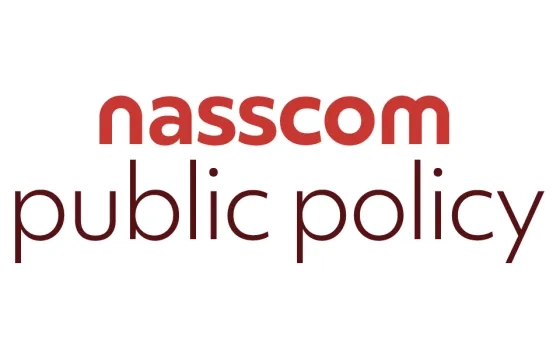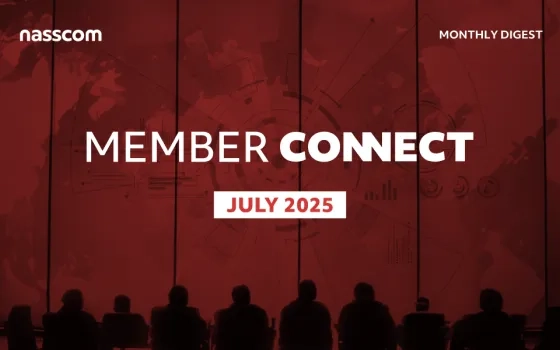Globally, there is a recognition that traditional source-based taxation regime is insufficient to tax highly digitalised businesses. This is premised on the fact that physical presence is no longer a key basis for provision of many services in the new businesses models which otherwise present a compelling case for attribution of a share of the income in the jurisdiction where the customers are located.
First, this scenario is of relevance to businesses that provide automated and standardised digital services to a large and global customer or user base. These are businesses that, in general, can provide digital services remotely to customers in markets using little or no local infrastructure. The test is not that the services can be provided remotely. The test is whether the business model relies on exploiting the data related to its customers in the other jurisdiction to generate business value. These situations are described in the OECD statement, para 18, as where the businesses, “…generally benefit from exploiting powerful customer or user network effects and generate substantial value from interaction with users and customers. They often benefit from data and content contributions made by users and from the intensive monitoring of users’ activities and the exploitation of corresponding data. In some models the customers may interact on an almost continuous basis with the supplier’s facilities and services. These characteristics are exhibited more strongly within certain types of digital service provision. However, the ability to develop an active and sustained presence in remote markets through the channels identified above can be considered of general applicability to businesses that provide an automated service on a digital platform.” Illustrative list of Automated digital services which could be covered in scope are provided by OECD in para 22 of its statement.
Second, the scenario has relevance to other businesses that generate revenues from selling goods or services, whether directly or indirectly, to consumers (i.e. consumer facing businesses). This is a broad set of businesses that includes traditional businesses that have been disrupted to a lesser degree by digitalisation, e.g. businesses that manufacture physical products, sell those products through physical distribution channels and support sales with less sophisticated marketing methods such as television and banner advertising. Here again, the key test on whether there is a high use by these businesses of digital technologies to more heavily interact and engage with their customer base. As the OECD statement, para 19, notes this, “…could be through building more sustained relationships with individual customers, through more targeted marketing and branding, and through the collection and exploitation of individual customer data. This is particularly true of businesses that are selling connected products and those using online platforms as a principal means of selling and marketing to consumers.” Illustrative list of Consumer-facing businesses which could be covered in scope are provided by OECD in para 28 of its statement.
NASSCOM’s view is that the above scenarios largely apply to consumer facing digital services (social media, online streaming, online advertising etc) and consumer facing businesses (connected cars, personal computing products, retail goods). The proposals would not apply to B2B IT-BPM services, the mainstay of our industry’s exports. This view is strengthened by the OECD statement in explaining automated digital service, in para 23 says, “Further work will be required on the definition of an automated digital service, especially for business models that deal mostly with other businesses, and on the distinction between such digital service businesses and businesses whose services might be delivered to a customer online but involve a high degree of human intervention and judgement. The latter types of business typically include professional services such as legal, accounting, architectural, engineering and consulting, which do not fall within scope of this definition.” In addition, the OECD statement, para 26, while explaining Consumer-facing businesses clarifies, “Businesses selling intermediate products and components that are incorporated into a finished product sold to consumers would be out of scope, subject to a possible exception for intermediate products or components that are branded and commonly acquired by consumers for personal use.” Third, till now, the Indian Government’s proposed scope of the digital taxation regime i.e. the SEP approach was enunciated in explanation 2A of S.9 of the Income Tax Act.
This stated, for the purposes of section 9(1)(i), “significant economic presence” of a non-resident in India shall constitute “business connection” in India and “significant economic presence” for this purpose, shall mean––
- transaction in respect of any goods, services or property carried out by a non-resident with any person in India including provision of download of data or software in India, if the aggregate of payments arising from such transaction or transactions during the previous year exceeds such amount as may be provided by rules; or
- systematic and continuous soliciting of business activities or engaging in interaction with such number of users in India, as may be provided by rules.
Provided that transactions or activities shall constitute “significant economic presence” in India, whether or not—
- the agreement for such transactions or activities is entered in India;
- the non-resident has a residence or place of business in India;
- the non-resident renders services in India.
The scope in (a) above is quite wide and therefore finalisation of related rules would provide clarity. The Finance Bill (here) released today provides adds explanation 3A to S.9 of the Income Tax Act. The newly proposed services would cover B2B service business models in Indian IT-BPM industry under the scope. The new explanation covers income attributable to:
- advertisement which targets Indian customers
- sale of data collected from a person who resides in India or from a person who uses internet protocol address located in India; and
- sale of goods or services using data collected from a person who resides in India or from a person who uses internet protocol address located in India
NASSCOM has recommended to both OECD and the Ministry of Finance, Government of India to keep B2B services industry out of the scope of the proposed taxation regime.
NASSCOM has also recommended that India should not frame a unilateral view and instead harmonise its position with the global view being framed as part of the OECD consultation. The Government of India had in Finance Act 2018 introduced the concept of SEP to tax companies that conduct business in India without any physical presence in the country. This would have become applicable from April 1, 2018, if the provisions had been notified. However, these were not notified.
In this year’s budget, the Finance Ministry has, in line with NASSCOM’s recommendation, deferred the applicability till Assessment year 2022-23.
Now, in 2020 we expect the discussions to continue at the OECD forum. In 2021, individual nations could finalise their domestic positions. If everything works as clockwork, earliest we could see this regime materialise is sometime in 2021. However, for the tax to be actually levied based on this framework, Double Tax Avoidance Agreements (tax treaties) with various countries would need to be amended.
Details of NASSCOM’s meeting with the Ministry of Finance to discuss OECD’s Unified Approach and implications for India (Prior to the release of latest statement by OECD)
NASSCOM recently met officials of Ministry of Finance (MoF) to highlight the broad impact of the nexus and profit allocation rule described in the Unified Approach. In the meeting, NASSCOM made a presentation to showcase the ambiguities in the OECD approach and the aspects which the Indian government should highlight to the OECD to bring clarity on taxing digital companies.
Following are the key points that were highlighted during the meeting:
- Clarity is required as to what is construed as “highly digitalized businesses” and if “consumer facing business” should be interpreted with respect to business model(B2C/B2B) or based on end users.
- Further, it would be useful to clearly define routine profits and non-routine profits to rule out ambiguities and litigation.
- Exclude B2B from the scope of the proposal, to ensure that companies with only B2B business are not covered.
- There is no clarity on treatment of losses at global level– whether such losses will be carried forward to future years or will they lapse
- There are no clear guidelines for withdrawal of unilateral measures introduced by countries, e.g. – Digital Services Taxes (DST) introduced by United Kingdom.
NASSCOM suggested the Indian government to initiate a dialogue with the OECD to ensure that concerns of IT-BPM sector are addressed.











